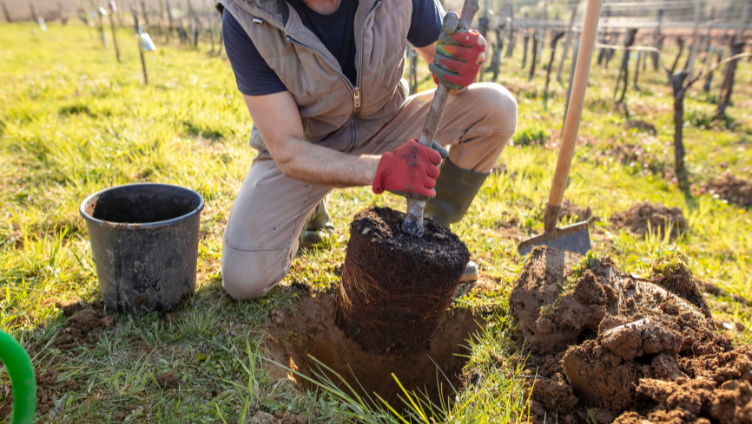While we are still experiencing the heat from another long and hot summer in East Texas, we all look forward to the time when days grow shorter, and the air turns crisp. While spring is often associated with new planting and gardening, the fall season presents a golden opportunity to reap the benefits of planting trees. This season, typically spanning from late September through early December, provides a multitude of benefits for both the trees and the environment they inhabit.
Favorable Climate Conditions:
One of the key benefits of planting trees in the fall is the mild climate. The scorching heat of summer has waned, allowing for cooler temperatures and more moisture in the soil. This combination creates an ideal environment for trees to establish their root systems. The warm soil encourages root growth, while the cooler air reduces the stress on newly planted trees. Additionally, the fall season is often characterized by more consistent rainfall, lessening the need for supplemental watering.
Root Growth:
Trees planted in the fall have the luxury of several months to develop strong root systems before the onset of summer heat. The warm soil and cooler air of autumn stimulate root growth without the risk of drying out. It can also be a concern in the hot and dry conditions of spring and summer. A well-established root system equips the tree to better withstand the challenges of the upcoming seasons. It also gives it a head start moving into warmer weather the following year.
Reduced Transplant Shock:
Transplant shock, a common concern when moving trees from a nursery environment to their permanent location, is notably diminished when planting in the fall. The moderate weather conditions allow the tree to acclimate more smoothly to its new surroundings. It can also decrease the likelihood of stress-induced problems. This results in quicker recovery and growth as the tree prepares for the following spring.
Pest and Disease Management:
Planting trees in the fall can contribute to better pest and disease management. Many insects and pathogens that threaten young trees are less active during the cooler months, reducing the chance of infestations and infections. By the time spring arrives, the tree has already developed a level of resilience, making it better equipped to fend off potential threats.
Conservation of Resources:
Many parts of East Texas have been under water restrictions during the summer. Newly planted trees often require less supplemental watering during the fall season, as the rainy weather naturally provides moisture.
Enhanced Aesthetic Appeal:
Planting trees in the fall can add a burst of color to landscapes and urban environments. Many deciduous trees exhibit stunning foliage as their leaves transition through vibrant shades of red, orange, and gold before falling. This not only enhances the aesthetic appeal of the surroundings but also contributes to a sense of seasonal charm. Seize the opportunity to plant trees in the fall, and we believe you’ll be pleased with the results.


